Bad Kösen an der Saale, situated between Halle and Weimar.
Hjalmar Schacht (22.1.1877–3.6.1970), 1933–39 President, Reichbank; 1934–37 Reich Economy Minister; 1935–37 General Plenipotentiary for the War Economy; until 1944 Reich Minister without Portfolio. He was in touch with the conspiracy from 1938. Arrested 23.7.1944 and taken directly to Ravensbrück; 31.8.1944 transferred to Gestapo HQ where according to his own testimony he remained four months before being sent to Flossenbürg. Schacht, ‘Abrechnung mit Hitler’.
Franz Halder was arrested at Aschau, 21.7.1944 and delivered to Ravensbrück three days later. He spent the period 7.10.1944–7.2.1945 in the Gestapo HQ dungeons. Schall-Riaucour, ‘Aufstand und Gehorsam’, pp. 329–32.
Revin, town in northern France where the US Army had an interrogation camp for a short while.
Which Generalmajor commanded a panzer korps in the spring of 1945 is not known. The details are too general to identify whom Kirchheim meant here.
Kirchheim was speaking of the trials of: Oberstleutnant Bernhard Klamroth, Major (Reserve) Hans-Georg Klamroth, Major Egbert Hayessen, Legationsrat Adam Trott zu Solz, Legationsrat Bernd von Haeften and SA-Gruppenführer Wolf Graf von Helldorf before the People’s Court on 15.8.1944. All six accused were sentenced to death. Adam von Trott zu Solz (9.8.1909–26.9.1944) worked in the information section at the Foreign Ministry and acted as an intermediary between the conspiracy and overseas. He was arrested 26.7.1944. Execution of his sentence of death was delayed for over a month. For the trials of 15.8.1944 see Wagner, ‘Volksgerichtshof, pp. 601–67; Würmling, ‘Adam Trott zu Solz’.
Roland Freisler (30.10.1893–3.2.1945), 1933 Secretary of State, Reich Justice Ministry, from 1942, President, People’s Court.
For Hoepner see notes 414 414 Generaloberst Erich Hoepner (14.9.1886–8.8.1944) probably met Spang in World War I as a Staff Officer.
and 415 415 Hoepner proved himself a very able panzer leader in the Polish, French and Russian campaigns. After ordering 4.Pz.Armee to retreat from Moscow on 8.1.1942 he was relieved of command and discharged the Wehrmacht for cowardice and disobeying orders. He was also deprived of the right to wear uniform and decorations. Hitler was so enraged by other unauthorised retreats that he decided to make an example of Hoepner. In Berlin, Hoepner contacted Olbricht and took an active part in planning the coup d’état of 20 July. He was sentenced to death by the People’s Court on 8.8.1944 and executed by hanging at Berlin-Plötzensee prison the same day.
above.
For Helldorf see note 418 418 SA-Obergruppenführer and General der Polizei Wolf Heinrich Graf von Helldorf (14.10.1896–15.8.1944); 1926 joined NSDAP; 1932 SA-Führer, Berlin-Brandenburg; 1932 Member Prussian Parliament; 1933 Member Reichstag; July 1935 Police President of Berlin. Despite his Nazi past and involvement in wrongdoings of the regime, from 1938 he was involved in the resistance, consorting with Goerdeler’s circle, and was involved in the coup plot of 20 July 1944.
above. The Major of the Reserve mentioned here is Hans-Georg Klamroth.
For the Honour Court see note 287 287 On Hitler’s order on 2.8.1944, Keitel summoned a session of the Wehrmacht Honour Court under the presidency of von Rundstedt. The other judges were Guderian, General der Infanterie Walter Schroth (3.6.1892–6.10.1944), General der Infanterie Karl Kriebel (26.2.1888–28.11.1961) and Generalleutnant Karl-Wilhelm Specht (22.5.1894–3.12.1953). The latter, who had won the Oak Leaves on the Eastern Front as CO, Inf.Reg.55 in 1941, was Insp.-Gen., Führer-Youth Movement. Generalmajor Ernst Maisel (16.9.1896–16.12.1978) prepared the protocols. Generalleutnant Heinrich Kirchheim deputised for Guderian at two sessions and at the special session for Speidel. The Honour Court was required to decide if officers suspected of complicity in the conspiracy were to be discharged from the Wehrmacht so that they could be tried in the People’s Court, or simply released. It heard no legal argument and relied solely on evidence presented by the RSHA and Gestapo. At the first session on 4.8.1944, 22 principal conspirators involved in the 20.7.1944 coup attempt were expelled from the Wehrmacht, including Generalfeldmarshall von Witzleben and Generaloberst Ludwig Beck. At the four sittings of 4, 14, 24.8.1944 and 14.9.1944, 55 Army officers were discharged from the Wehrmacht and another 29 released on the recommendation of the Honour Court (including Hans Cramer on 24.8.1944 and Alexander von Pfuhlstein on 14.9.1944). Charges against 19 other officers were dropped. At a special session on 4.10.1944, by majority decision Speidel was not dismissed from the Wehrmacht, and his superior officer Rommel was implicated accordingly. Keitel and Specht voted against Speidel. For the Honour Court, see Ueberschär, ‘Stauffenberg’, p. 150f; Reuth, ‘Rommel’, p. 238ff; Domarus, ‘Hitler’, Vol. 2, p. 2137f; and ‘20 Juli 1944’, p. 195ff.
above. Ernst Kaltenbrunner, from 30.1.1943 Head RSHA, Chief of Sipo and SD.
SS-Gruppenführer Heinrich Müller (28.4.1900 – disappeared 29.4.1945), Head of Gestapo.
In its session of 4.10.1944 the Honour Court had to decide whether Speidel should answer before the People’s Court. This protocol supports the affidavit sworn by Guderian and Kirchheim in 1946 regarding the hearing. Both defended Speidel against Keitel and Kaltenbrunner on the basis that Speidel had reported the attempted assassination of Hitler to Rommel, and thus had done all that duty required of him. The acquittal of Speidel now implicated Rommel. For more see Reuth, ‘Rommel’, p. 238ff.
Kirchheim also spoke briefly about the Honour Court hearing in SRGG 1180(c), 1.5.1945, TNA WO 208/4169. Kirchheim was obliged to justify himself to his fellow prisoners because shortly after his capture he had made an appeal to Keitel on Radio Luxembourg to lay down arms, having recently been a judge of the Honour Court. Von Thoma called him ‘scum’ and would not forget how he had delivered comrades to the gallows. GRGG 288, 24–26.4.1945, TNA WO 208/4177.
See note 477 477 Kirchheim was speaking of the trials of: Oberstleutnant Bernhard Klamroth, Major (Reserve) Hans-Georg Klamroth, Major Egbert Hayessen, Legationsrat Adam Trott zu Solz, Legationsrat Bernd von Haeften and SA-Gruppenführer Wolf Graf von Helldorf before the People’s Court on 15.8.1944. All six accused were sentenced to death. Adam von Trott zu Solz (9.8.1909–26.9.1944) worked in the information section at the Foreign Ministry and acted as an intermediary between the conspiracy and overseas. He was arrested 26.7.1944. Execution of his sentence of death was delayed for over a month. For the trials of 15.8.1944 see Wagner, ‘Volksgerichtshof, pp. 601–67; Würmling, ‘Adam Trott zu Solz’.
above.
Meant here are Oberstleutnant Bernhard Klamroth (20.11.1910–15.8.1944) and his elder cousin and father-in-law Major (Reserve) Johannes Georg Klamroth (12.10.1898–26.8.1944).
The fragmentary remains of the recording tapes do not support the idea that Freisler behaved himself any better in the third session of the People’s Court on 15.8.1944. ‘Also in this principal trial he was unrestrained and tyrannical.’ Wagner, ‘Volksgerichtshof’, p. 684.
Читать дальше

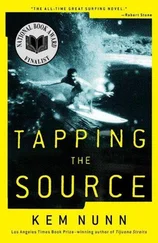
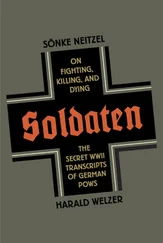

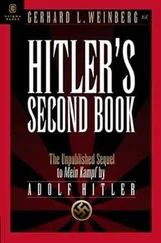
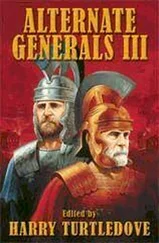
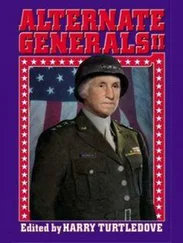

![Traudl Junge - Hitler's Last Secretary - A Firsthand Account of Life with Hitler [aka Until the Final Hour]](/books/416681/traudl-junge-hitler-s-last-secretary-a-firsthand-thumb.webp)



